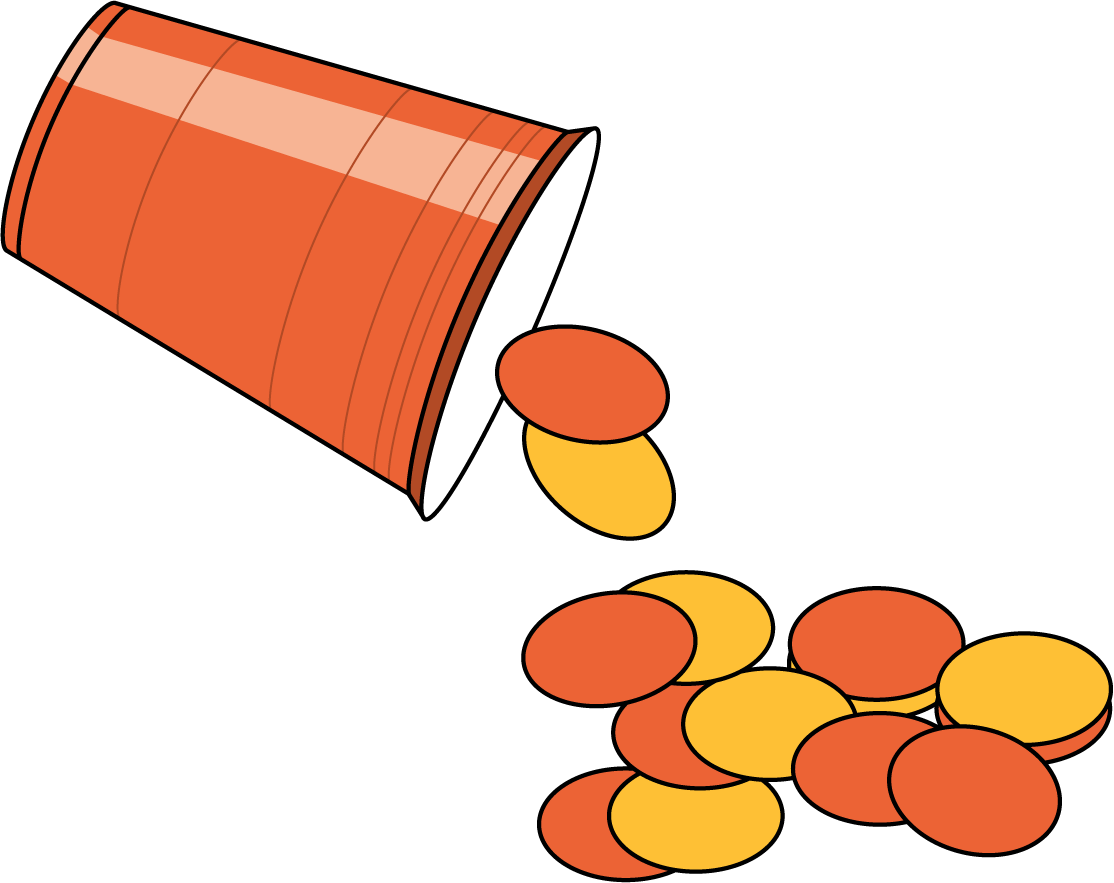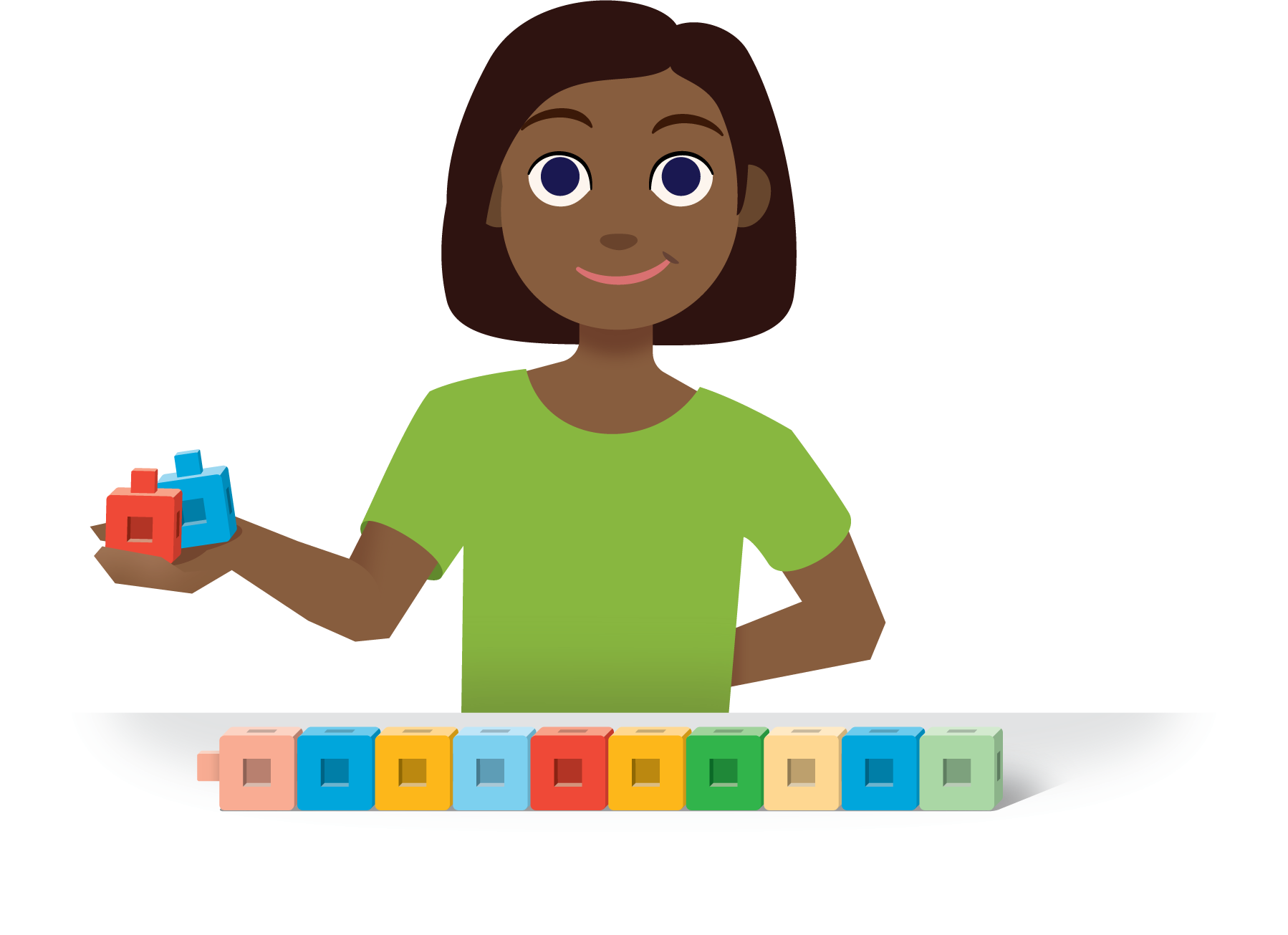Lesson 20
What’s the Story?
Warm-up: How Many Do You See: 10-Frames (10 minutes)
Narrative
Launch
- Groups of 2
- “How many do you see? How do you see them?”
- Flash the image.
- 30 seconds: quiet think time
Activity
- Display the image.
- “Discuss your thinking with your partner.”
- 1 minute: partner discussion
- Record responses.
- Repeat for each image.
Student Facing
How many do you see?
How do you see them?




Student Response
For access, consult one of our IM Certified Partners.
Activity Synthesis
- “Did anyone see the dots the same way but would explain it differently?”
Activity 1: Write Story Problems (15 minutes)
Narrative
The purpose of this activity is for students to write story problems based on equations. Students are given equations with boxes for the unknowns. They may choose any two equations. When students write story problems from equations, they reason abstractly and quantitatively (MP2). During the synthesis, students discuss which equation matches the story problem and explain how they know.
Advances: Representing, Conversing
Supports accessibility for: Conceptual Processing, Attention
Required Materials
Materials to Gather
Launch
- Groups of 2
- Give students access to connecting cubes or two-color counters.
Activity
- “You have solved and represented different types of story problems. Today you will choose two equations and write a story problem for each equation. You may choose any two equations you want.”
- 8–10 minutes: partner work time
- Monitor for 2–3 different story problems to share during the synthesis.
Student Facing
Choose 2 equations. Write a story problem for each equation.
- \(3 + 5 = \boxed{\phantom{8}}\)
- \(4 + \boxed{\phantom{3}} = 7\)
- \(10 - 5 = \boxed{\phantom{5}}\)
- \(9 = 5 +\boxed{\phantom{4}}\)
- \(\boxed{\phantom{3}} + \boxed{\phantom{7}} = 10\)
- \(6 + \boxed{\phantom{3}} = 9\)
- \(8 = 2 + \boxed{\phantom{6}}\)
-
Equation: ________________________________
Story Problem:
-
Equation: ________________________________
Story Problem:
Student Response
For access, consult one of our IM Certified Partners.
Activity Synthesis
- Invite previously identified students to share.
- "Which equation matches the story they wrote? How does it match the story?"
Activity 2: I've Got the Answer (10 minutes)
Narrative
Launch
- Groups of 2
- Display \(3 + 3 = 6\) and \(10 - 6 = 4\).
- “What are some other equations we can write that have a value of 6?”
- 30 seconds: quiet think time
- Share and record responses.
Activity
- "We just wrote story problems to match given equations. Now you will write the equation and the story problem. You will choose a number. This number will be the answer to your story problem. You will write an equation with this number as the answer. Then write a story problem that matches the equation you wrote."
- 5 minutes: independent work time
- “Share your story problem and equation with your partner. Work together to make sure your story problem and equation match.”
- 4 minutes: partner discussion
- Monitor for story problems with answers in different places to share during the lesson synthesis.
Student Facing
Circle a number that represents your answer.
2
3
4
5
6
7
8
9
10
Write an equation that includes the number you chose.
Put a box around the number.
Equation: ________________________________
Write a story problem that matches your equation.
Share your story problem with a partner.
Solve your partner’s story problem.
Write the equation that matches the story problem.
Equation: ________________________________

Student Response
For access, consult one of our IM Certified Partners.
Advancing Student Thinking
If students write story problems with an answer other than the number they circled, consider asking:
- "What equation did you write with the number you chose?"
- "How does that equation match the story you wrote?"
Activity Synthesis
- “Let’s share some story problems and think of equations that could represent each one.”
Activity 3: Centers: Choice Time (15 minutes)
Narrative
The purpose of this activity is for students to choose from activities that offer practice adding and subtracting within 10. Students choose from any stage of previously introduced centers.
- Capture Squares
- Shake and Spill
- What’s Behind My Back
Required Materials
Materials to Gather
Required Preparation
- Gather materials from previous centers:
- Capture Squares, Stages 1 and 2
- Shake and Spill, Stages 3 and 4
- What's Behind My Back, Stage 2
Launch
- Groups of 2
- “Now you are going to choose from centers we have already learned.”
- Display the center choices in the student book.
- “Think about what you would like to do.”
- 30 seconds: quiet think time
Activity
- Invite students to work at the center of their choice.
- 10 minutes: center work time
Student Facing
Choose a center.
Capture Squares

Shake and Spill

What's Behind My Back

Activity Synthesis
- “Clare was playing What’s Behind My Back with eight connecting cubes. Her partner hid some behind her back and showed her three cubes. Clare counted, ‘7, 6, 5.’ She said her partner was hiding five behind her back. What equation can we write to show how Clare solved the problem?” (\(8 - 3 = \boxed{5}\))
Lesson Synthesis
Lesson Synthesis
Share a previously identified story problem.
“Today we wrote our own story problems. This is a problem one of your classmates wrote. What equations match this story problem?”
If needed, ask, “Where does the box go in the equation?”
If needed, ask, “What is an equation with an unknown value that represents this story problem?”
Cool-down: Unit 2, Section D Checkpoint (0 minutes)
Cool-Down
For access, consult one of our IM Certified Partners.
Student Section Summary
Student Facing
-
We learned about equations where a number is missing and related them to story problems.
Lin has 5 bingo chips on her board.
She also has some chips on the table.
All together she has 9 bingo chips.
How many chips does Lin have on the table?\(9 - 5 = \boxed{\phantom{4}}\)
and
\(5 + \boxed{\phantom{4}} = 9\) -
We thought about how addition and subtraction are related by solving story problems using both addition and subtraction.
9 students are playing bingo.
3 students are using blue chips to cover their boards.
The other students are using yellow chips.
How many students are using yellow chips?Clare wrote \(3 + \boxed{\phantom{6}} = 9\)
Jada wrote \(9 - 3 = \boxed{\phantom{6}}\) -
We wrote our own story problems to match equations.
Try writing a story to match these equations.
\(7 + 2=\boxed{\phantom{3}} \)
\(6 + \boxed{\phantom{3}}= 9\)
